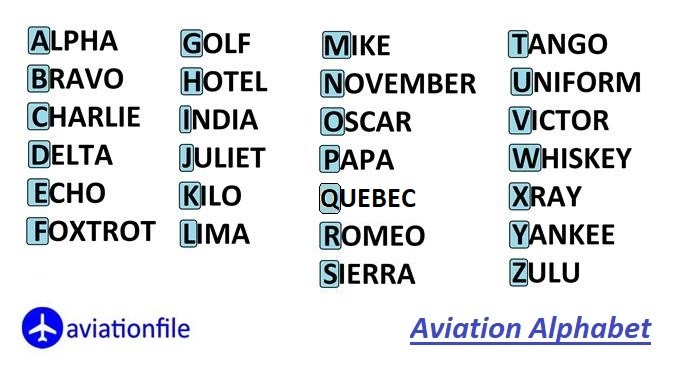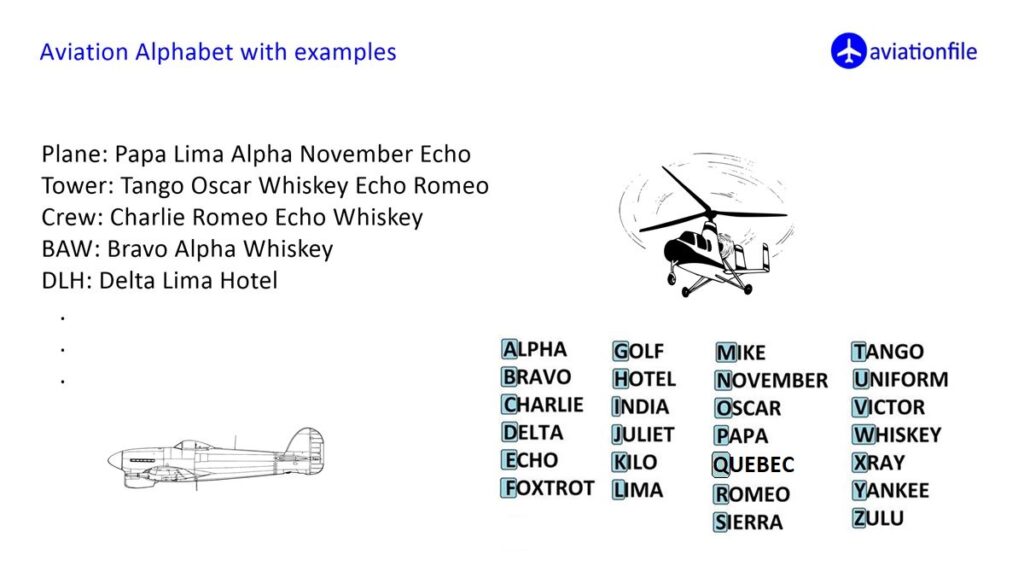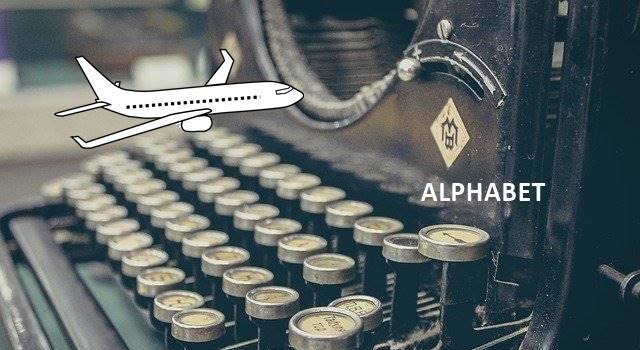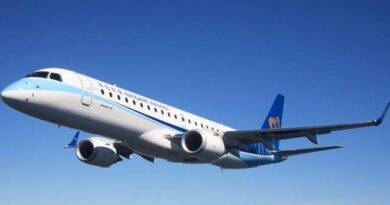The Unsung Hero of Aviation: Decoding the NATO Phonetic Alphabet
The NATO phonetic alphabet, a crucial tool for clear communication in aviation, has an intriguing history rooted in the need for a standardized system during World War II. Developed by the International Air Transport Association (IATA) and the International Civil Aviation Organization (ICAO), this alphabet ensures precise communication across diverse languages and accents. Discover its origins, evolution, and significance in enhancing aviation safety and efficiency. Read on to explore why the NATO phonetic alphabet remains an indispensable part of global aviation operations.

Let’s look to the brief history
During World War II many nations used their own spelling alphabets. For example United States adopted the Army and Navy radiotelephony alphabet during 1941. The aim was to standardize systems among all branches of its armed forces. In this alphabet the letter A was for ABLE and B was for BAKER and the alphabet was known as “ABLE BAKER”.
United Kingdom’s Royal Air Force adopted another one similar to ABLE BAKER during the war as well. Other British forces used another similar alphabet named RAF radio alphabet. It was similar to the phonetic alphabet used by Royal Navy during World War I.
United Kingdom, United States and Australia developed “Combined Communications Board (CCB)” in 1943 to enable the communication during joint operations of each other.
During World War II, U.S conducted significant research and development. F.D. Hand (Director of Communications in The Army Air Force and member of committee on CCB) with the help of Harvard University’s Psycho-Acoustic Laboratory made a report after his research.
The results showed that many of the words in the military lists had a low level of intelligibility. But that most of the deficiencies could be remedied by the judicious selection of words from the commercial codes and those tested by the laboratory. In a few instances where none of the 250 words could be regarded as especially satisfactory, it was believed possible to discover suitable replacements. Other words were tested and the most intelligible ones were compared with the more desirable lists. A final NDRC list was assembled and recommended to the CCB.
After World War II
After World War II many aviation staff (pilots, ground personnel) were using ABLE BAKER alphabet and this alphabet was officially used for international aviation. There was also a “ANA BRAZIL” alphabet in Latin America at the same time because many sounds were unique to English in ABLE BAKER alphabet.
IATA (International Air Transportation Association) recognized the need of a universal alphabet. They studied on a draft alphabet consisting common sounds from both English, French, Spanish and Portuguese. IATA presented this draft alphabet to ICAO (International Civil Aviation Authority) in 1947.
Jean Paul Vinay (Professor of Linguistics at the Montreal University) studied closely with ICAO during 1948 – 1949 to search and develop the spelling of the alphabet. After all revisions and further studies the revised alphabet was published on 1 November 1951. Some critics received from users like confusing words. “Delta” and “Extra” are criticized for the similarity between ABLE BAKER alphabet.
Later in 1952 ICAO decided to revise the alphabet and started further research. By early 1956 ICAO published the results of the research. NATO was in the process and by 1 March 1956 the new alphabet was published with just one revised word November (By NATO’s request depending on U.S. Air Force research).
The final version of the alphabet published on 1 March 1956 after all.

Soar Through Communication with the Aviation Alphabet: Your Guide to the NATO Phonetic Alphabet
Ever heard pilots and air traffic controllers speak in cryptic code? That’s the Aviation Alphabet, also known as the NATO Phonetic Alphabet, in action. This alphabet uses clear, unambiguous words to represent each letter, ensuring accurate and efficient communication in noisy environments.
Learn Why You Need It:
- Reduces Misunderstandings: Over crackling radios or in busy environments, similar-sounding letters can lead to confusion. The Aviation Alphabet eliminates that risk.
- Improves Accuracy: Clear pronunciation of each word ensures vital information like flight numbers and call signs are received correctly.
- Enhances Safety: Precise communication is crucial in aviation. The Aviation Alphabet helps prevent accidents and ensures the smooth operation of air traffic.
Master the Alphabet:
- Practice Pronunciation: Familiarize yourself with the correct pronunciation of each word. Online resources and apps can help.
- Use it Regularly: Incorporate the Aviation Alphabet into your communication whenever clarity is crucial.
- Learn the Alternatives: While the NATO version is most common, the International Civil Aviation Organization (ICAO) version has minor variations.
Unlock the Benefits:
- Sharpen Communication Skills: Mastering the Aviation Alphabet improves your communication skills in any situation, not just aviation.
- Boost Professionalism: Demonstrate your commitment to accuracy and clarity in your field.
- Join the Global Conversation: The Aviation Alphabet is a universal language understood by professionals worldwide.
Take Flight with Confidence:
In conclusion, the NATO phonetic alphabet remains an essential pillar in aviation, ensuring clear and precise communication across the globe. Its development and standardization have significantly reduced misunderstandings and errors in critical situations. By understanding its history and application, we can appreciate the profound impact it has on enhancing aviation safety and efficiency.
References:
- International Civil Aviation Organization (ICAO): https://www.icao.int
- “NATO Phonetic Alphabet” – Wikipedia: https://en.wikipedia.org/wiki/NATO_phonetic_alphabet
- “The Development of the NATO Phonetic Alphabet” – Smithsonian National Air and Space Museum: https://airandspace.si.edu/stories/editorial/development-nato-phonetic-alphabet
- “The NATO Phonetic Alphabet: A Brief History” – Federal Aviation Administration (FAA): https://www.faa.gov/about/history/brief_history/nato_phonetic_alphabet/
- ICAO Radiotelephony Phonetic Alphabet – Annex 10 to the Convention on International Civil Aviation: https://www.icao.int/APAC/Meetings/2012_APANPIRG/10ANPIRG21/10ANPIRG21_IP19(2).pdf
For more articles click.
For related ICAO page click.



